Wat Mangkon Kamalawat Where You Can Explore The History Of Bangkok
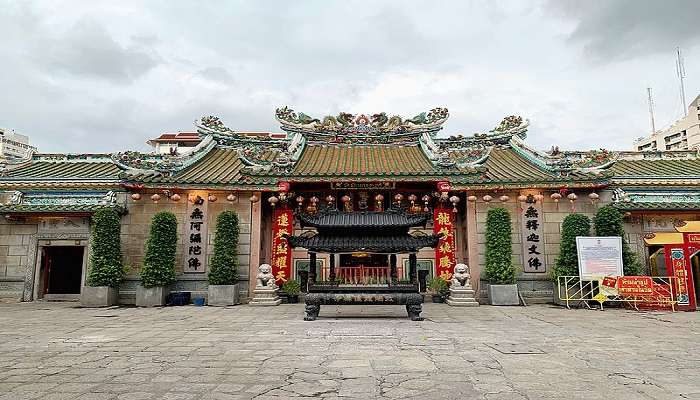
Are you In Bangkok and looking for a spiritual retreat make sure to explore Wat Mangkon Kamalawat is a must! As the city’s spiritual sanctuary, this place of devotion offers a peaceful retreat from the daily grind and encourages devotees to delve into its fascinating history. Find moments of peace and devotion amidst the chants of the monks and the fragrance of the burning incense. Nestled within the lively streets of Chinatown, this ancient temple serves as a sacred space for reflection, meditation, and devotion. It is a popular spiritual destination where visitors can find inner peace, calmness and contentment amidst the vibrant urban landscape.
Wat Mangkon Kamalawat Bangkok: History & Significance
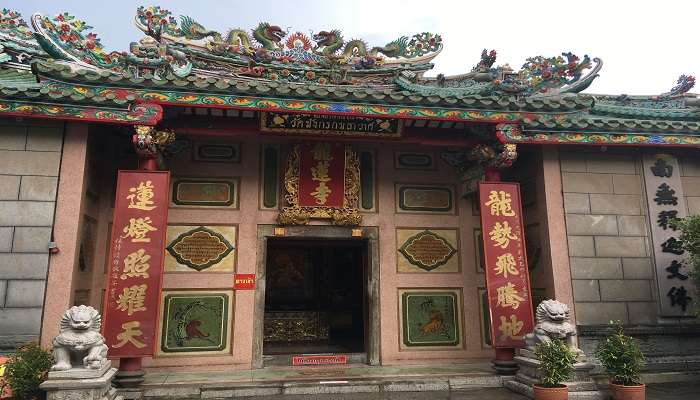
Built-in 1871 by Phra Archan Chin Awang Samatiwat, Wat Mangkon Kamalawat Temple is one of Bangkok’s oldest and most popular Buddhist temples. The founders of this temple originally named it ‘Wat Leong Neoi Yi’, which translates to Dragon Lotus Temple, it was later changed to Wat Mangkon Kamalawat under the rule of King Rama V. This 153-year-old place of worship was established to introduce and promote Mahayana Buddhism around Bangkok. Built in classic Chinese architecture, the temple’s grand exterior, with sweeping tiled roofs decorated with intricate dragons and beautiful floral and animal motifs, is a breathtaking spectacle.
Must Read: Places To Visit In Bangkok
Wat Mangkon Kamalawat: Four Heavenly Kings
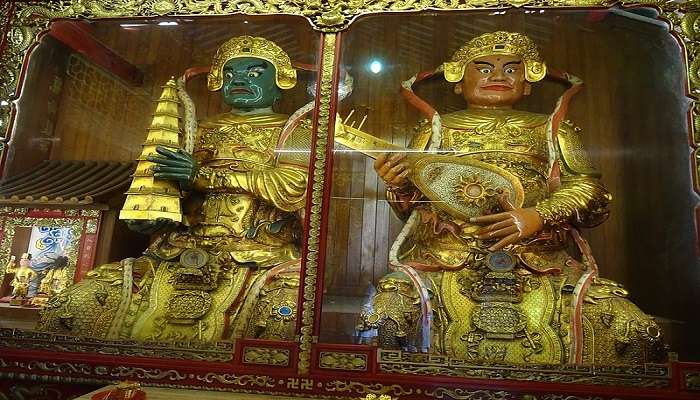
As we pass through the main entrance, we enter the Halls of Heavenly Kings. Four statues of the Gods, two on each side, are decked in warrior costumes, called the Chatulokkaban. They are regarded as the guardian deities of the world, one for each direction, and the protectors of Dharma. The Laughing Buddha, placed in the hall’s centre, cheerfully welcomes the devotees.
- Dhritarashtra: Guardian of the East. He is often depicted holding a pipa, a traditional Chinese musical instrument.
- Virudhaka: Guardian of the South. He is often depicted holding a sword.
- Virupaksha: Guardian of the West. He is often depicted holding a stupa, which represents the Buddhist teachings.
- Vaishravana (sometimes known as Kuvera): Guardian of the North. He is often depicted holding a mongoose, symbolising his ability to grant wealth.
Upon entering the main shrine hall from the Hall of Heavenly Kings, one can witness three large Buddha statues. The middle one is the Siddartha Gautama Buddha or Lord Buddha. The other two are Amitabha Buddha and Vairocana Buddha. As we proceed to the rear of the main shrine, we are led to a mini shrine hall consisting of three idols—one dedicated to Guan Yin, the Goddess of Mercy, and another to Phra Archan Chin Awang Samatiwat.
Wat Mangkon Kamalawat Bangkok: Important Festivals
Wat Mangkon Kamalawat hosts all the Chinese cultural events around the year, but the temple is in full glory during the Lunar New Year and Annual Vegetarian Festival. Tourists, visitors, and devotees from different parts of the Asian continent gather here to participate in and experience these major festivities.
1. Lunar New Year
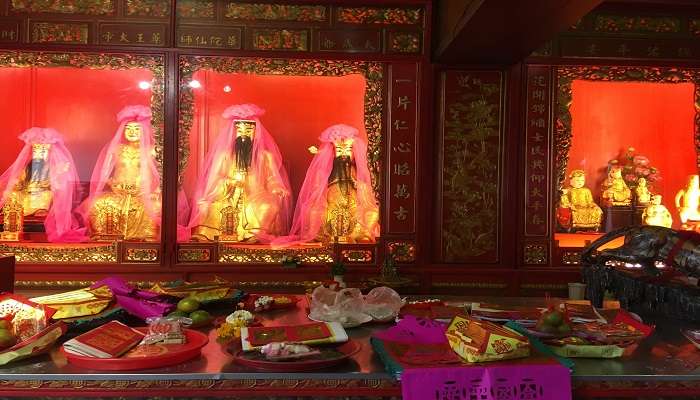
Popularly called the Chinese New Year, this is one of the major festivals at Wat Mangkon Kamalawat. This temple becomes the focal point for all the Thai Chinese devotees to flock together and welcome the new year with joy and excitement. The temple premises are vibrantly decorated in red & gold lanterns. Elaborate and energetic Lion dance performances steal the show. They are believed to ward off the evil eye and negative energy and bring prosperity and good fortune. The air fills with the sounds of firecrackers, and the rhythmic clanging of cymbals and drums brings a festive vibe to the place.
Suggested Read: Things To Do In Bangkok In 5 Days
2. Annual Chinese Vegetarian Festival
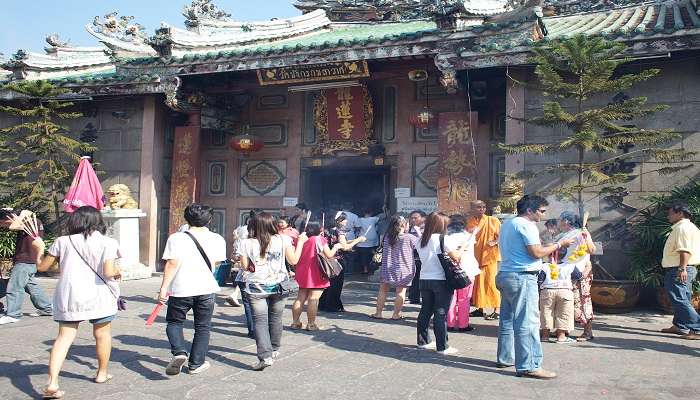
Celebrated in September or October, this festival lasts nine days. During this time, the Nine Emperor Gods, who preside over the movement of the planets, are invoked and welcomed. Prayer altars are crowded with devotees performing rituals, and the air is filled with the tinkering of the bells. Numerous stalls are set up near the temple to encourage the consumption of vegetarian dishes. It is believed that following a strict vegetarian/vegan diet and maintaining celibacy is a veneration to God, which brings purity of soul and prosperity. A carnival-like atmosphere parades near the temples, where the devotees, dressed in traditional white attire, chant prayers and hymns to please the Gods. This festival is celebrated almost at the same time as Navratri or Dussehra.
How To Reach Wat Mangkon Kamalawat
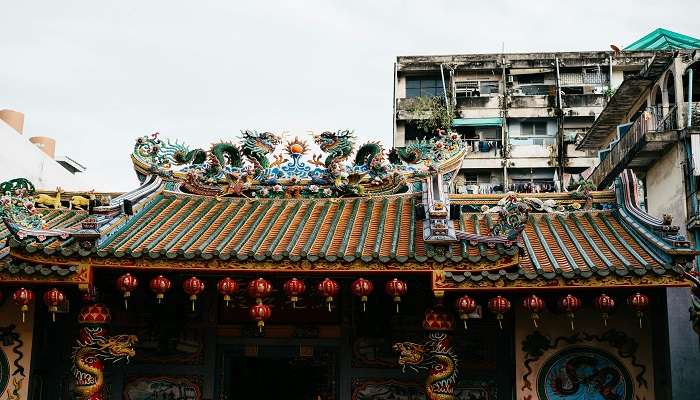
Located in Chinatown, this 153-year-old temple is accessible by MRT, boat, and taxi. The entrance is from Charoen Krung Road.
By MRT: Reaching the temple by MRT is a convenient mode of transport. Take the blue line and alight the train at Wat Mangkon. Station Code: BL 29
By Boat: Commuting by boat or river bus is the fastest mode. Take the Chao Phraya Express and alight at Ratchawong Pier, and the Wat Mangkon Kamalawat is just 2 minutes by walking.
By Taxi: You can hire a taxi to the temple. It takes around 35 minutes to reach Wat Mangkon Kamalawat temple from Suvarnabhumi International Airport, Bangkok.
Suggested Read: Museums In Bangkok
Nearby Attractions To Wat Mangkon Kamalawat
Discover the best places to visit at Wat Mangkon Kamalawat for a unique experience. These include:
1. Wat Traimit
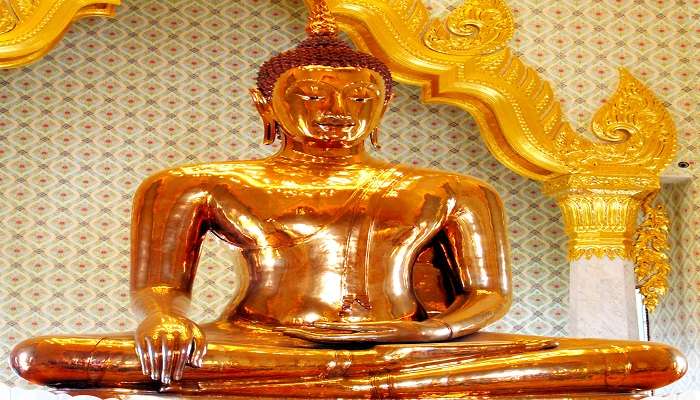
Wat Traimit holds the biggest and most priceless Buddha statue in the world. Standing 10 feet tall, this golden Buddha statue weighs almost 5.5 tons and is composed of 83% gold. Many tourists come to this temple for the splendid view of the Buddha. The temple also houses a museum that provides information about the statue’s history and construction.
Opening hours: 8.00 am – 5.00 pm.
Entry fee: 100 Thai Baht + 40.00 Thai Baht for visiting the museum.
Distance from Wat Mangkon Kamalawat: 1.0 km approx.
2. Wat Saket Ratchaworamahawihan
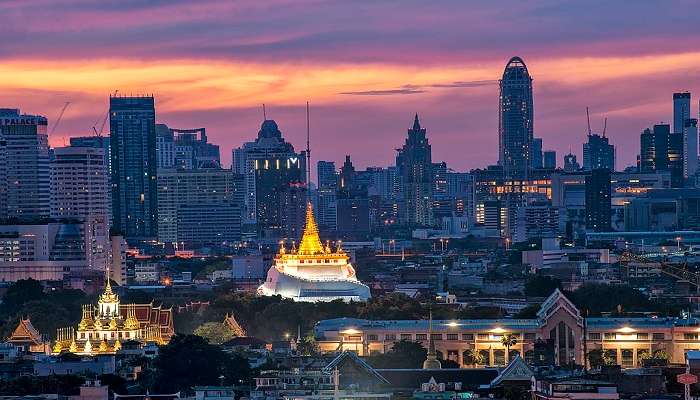
Usually shortened to Wat Saket, it is known as the Gold Mountain. This ancient temple, dating back to the Ayutthaya Era, was renovated under the reign of King Rama I. This artificial hill served as a watch tower during the King’s rule. Visitors can get stunning views of Bangkok from Wat Saket. Foreigners need to take an entry ticket, which is free for locals. Climb up 300 steps and reach the top. There are gongs and bells at different stages of the hill. Make a wish and ring them for good luck.
Operating hours: 7.00 am – 7.00 pm.
Entry ticket: 100 Thai Bahts for foreigners.
Distance from Wat Mangkon Kamalawat: 1.6 km approx.
Further Read: Honeymoon in Bangkok
A visit to Bangkok’s Chinatown is incomplete without a visit to Wat Mangkon Kamalawat. Surrender to the divine, travel inwards, seek peace, and embrace the solace at Wat Mangkon Kamalawat. Appreciate the architectural splendour and immerse yourself in the faint ambience of the incense sticks. We hope our comprehensive guide has inspired you to plan a trip to Bangkok and explore this spiritual marvel to connect with your higher self.
For our editorial codes of conduct and copyright disclaimer, please click here.
Cover Image Credit: Chainwit for Wikipedia Commons
Frequently Asked Questions About Wat Mangkon Kamalawat
What is the best time to visit Wat Mangkon Kamalawat?
Lunar New Year (in the month of January or February) and Annual Chinese Vegetarian Festival (in the month of September or October) are the best times to visit Wat Mangkon Kamalawat.
How much is Wat Mangkon Kamalawat entrance fee?
There is typically no entrance fee to visit Wat Mangkon Kamalawat.
What are the Wat Mangkon Kamalawat opening hours?
The Wat Mangkon Kamalawat temple is open daily from 8.00 am to 6.00 pm for visitors.
Is there any dress code for visiting Wat Mangkon Kamalawat?
Nothing specific dress code but the visitors are encouraged to dress modestly when visiting a place of worship.
What are some must try local delicacies in Bangkok’s Chinatown?
Authentic Chinese culinary treats from noodles, sea food, roasted duck and dim sum are a must try while exploring Bangkok’s Chinatown.
People Also Read:
Thailand Temples Temples In Vietnam Thai Vi Temple
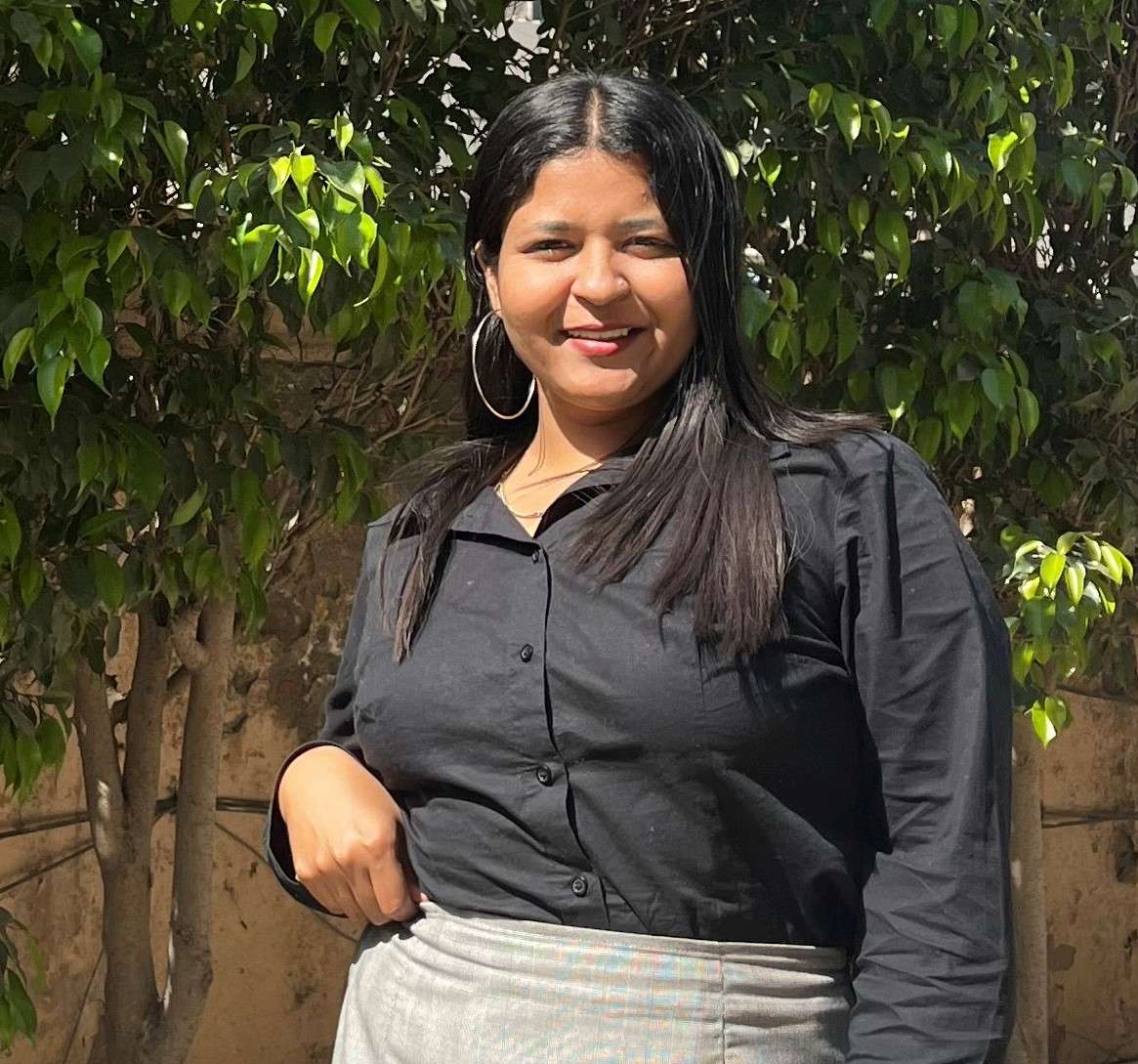
Embrace the essence of surreal places around the world through perfect narratives with a touch of imagination. As a content writer, I weave my ideas and words together to create a vivid picture of alluring destinations. Embark on limitless adventures as you read thrilling travel stories.











